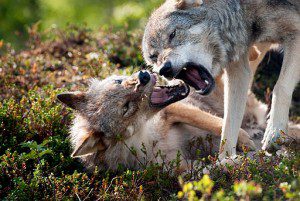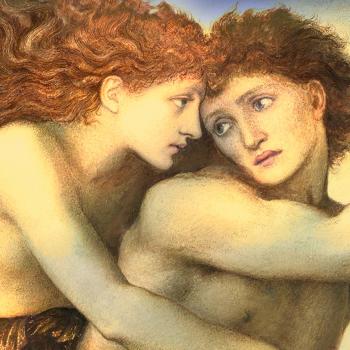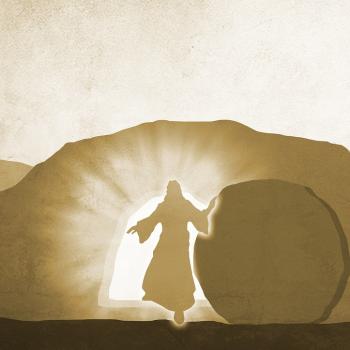 If you have been through a high school science class, you’ve probably learned that our complex, diverse universe, at its core, is animated by a mere four physical forces (gravitation, electromagnetism, strong and weak nuclear forces). It somewhat strains credulity to consider that all of the wonders created by nature and by human consciousness turn around something so basic.
If you have been through a high school science class, you’ve probably learned that our complex, diverse universe, at its core, is animated by a mere four physical forces (gravitation, electromagnetism, strong and weak nuclear forces). It somewhat strains credulity to consider that all of the wonders created by nature and by human consciousness turn around something so basic.
While the above forces pertain to the deep structure of the universe, its dynamic movement, its evolutionary trajectory as a whole (whether driven by deities or physics) all appears to spring from just two animating forces or processes: creation and destruction. Both are necessary. The first produces ever-greater complexity of form – eventually resulting in life, while the latter clears and recycles the existing in order to make way for the new.
Further up the ladder of existence, in the realm of living systems, these two forces manifest as life-and-growth versus destruction-and-decay. Again, both are necessary for the progression of life to occur.
Higher still, in the realm of the psyche, the two forces are experienced as that which nourishes and animates life versus that which constrains, diminishes, or destroys life. In a word, these are “love” versus “fear” — or in their dynamic form, “hope/excitement” versus “dread/contraction”.
As with the previous, both love and fear are needed. Fear protects us from harm, while love inspires us to grow, flourish, and progress.
In the universe as presently configured, all of the above forces must remain in a balance. Were any to become overly dominant (even love), the evolutionary trajectory would be disrupted. (That’s why Nature can sometimes seem cruel.) Everything serves its proper role.
The Two Forces in Society
The evolution of human consciousness has reached the stage where we can now intervene in our own further evolution. We can alter the course of a process that has proceeded naturally in eons past. This is both a blessing and a curse.
We now have the ability to tip the balance in particular instances toward greater creation or greater destruction. We can proceed focused upon greater love or greater fear. When done with awareness and intelligence, this tweaking of the balance can accelerate our evolution by enhancing new discovery and creation, while clearing away that which has served its purpose but now is going obsolete.
To date however, we have done this “tipping” largely without awareness. We commonly seek an immediate short-term benefit, or the elimination of an immediate inconvenience, without considering consequences in the larger context — presuming that whatever happens “well, it must be the natural order of things”.
With such blindness, it may appear that social and ecological ills — hate, hostility, cruelty, inequality, desperation, a deteriorating environment — are all somehow normal and natural. It appears the best we can do is to take care of ourselves, and if somebody can’t keep up or gets in our way, well, too bad for them. Again, it’s misperceived as the natural order – the new normal (formerly known as ‘social Darwinism’).
The Two Forces in Politics
We see the above played out with striking clarity in the campaign themes of two warring political philosophies in the current national election process. Fear and love. In the one: fear of the other, fear of change, fear of weakness, fear of the future — responding with ever-greater force, control, power, violence, suppression and isolation. Dead institutions are revered for their controllable, unchanging predictability while living systems are denigrated on the same basis. The latter exist largely to serve the former. (To illustrate our faith in institutions: what do you feel would make your life more secure 10 years from now: several million dollars or having a rich network of friends?)
The “love” philosophy is essentially the reverse of the above, serving first the interests of living systems: educate the populace, keep them healthy, protect their rights, enhance their opportunities, preserve the integrity of the natural world we all depend upon. From this perspective, institutions are useful only to the extent that they further goals like these.
Righting the Balance
When the above is stated so starkly, it may be difficult to see that a balance is still necessary. The extreme polarization and seemingly unbridgeable gap between parties may be a symptom of a general lack of awareness — awareness of the fears, hopes, needs, and potentials of all concerned. Absent all other considerations, I believe most would likely like to see life flourish. But yes, we currently live in an imperfect and evolving world, so some constraint and guidance is appropriate and necessary. Finding the right balance is the trick.
There is a Native American parable that symbolizes the two forces as wolves, warring in the heart of humanity — the moral being that the wolf who “wins” is the one we feed. In view of the above, perhaps we still need to feed both; but only in their proper proportions.
Image: Johannes Jansson/norden.org [CC BY 2.5 dk (http://creativecommons.org/licenses/by/2.5/dk/deed.en)], via Wikimedia Commons












